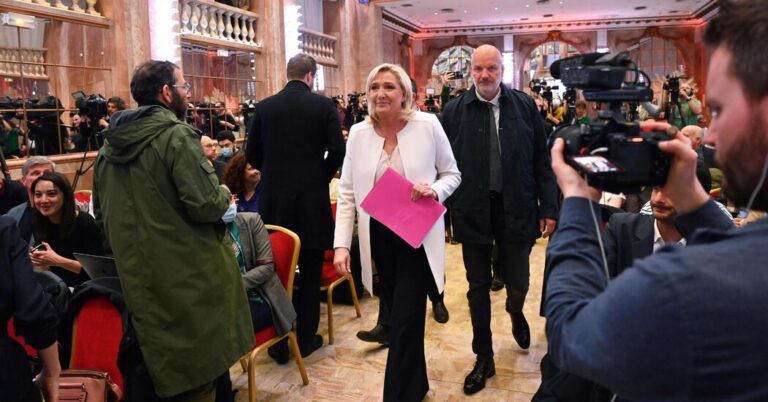A Close-Up View of the Baltimore Bridge Collapse
Maroon containers larger than a car sat twisted and crushed. Massive beams of steel warped into crooked arches. Pillars of jagged concrete poked out from the water — a tomb of wreckage that dimly reflected on the gray-toned river.
From roughly 100 yards away, deep into the Patapsco River in Baltimore, the site of one of the worst bridge collapses in the country’s history is a haunting scene.
The U.S. Coast Guard allowed The New York Times to ride aboard a response boat on Saturday afternoon to witness up close the destruction of the Francis Scott Key Bridge, which was struck by the cargo ship Dali on Tuesday, killing six men, all construction workers who were working on filling potholes on the bridge.
As the 45-foot-long Coast Guard vessel neared the scene of the disaster, a service member who had made several trips to the site braced passengers for the view to come.
“It’s still shocking every time.”
The Coast Guard boat initially neared the cargo ship on the rear side, the stern, which was spared from much of the impact of the collapse. Two people could be seen walking along the starboard, though it was unclear if they were investigators or crew members, all of whom are from India and have remained on the ship to keep it operable.
An anchor that the crew members had used in desperation to keep the ship from hitting the bridge was visible, submerged in calm water. A thin and yellow boom floated around the ship to contain spills. It looked similar to crime-scene tape. The gray and red shipping containers were stacked up to nine rows high, partly shielding for a moment the wreckage that lay behind it.
As the Coast Guard boat inched closer toward the cargo ship, the humongous scale of the collapse came into view. Some state officials onboard, who were not authorized to speak to the news media, shook their heads and muttered under their breath.
“Oh, my gosh.”
Warped masses of the bridge sliced the steel deck of the ship, causing pieces of the blue hull to peel outward. On a wide piece of the deck cratered by the bridge’s blow, knots of blackened metal morphed into a jumbled, metallic maze.
A large piece of concrete stuck out of the ship. Two people wearing all orange moved through the wreckage on the deck, balancing themselves with their hands and feet, as if it were a mountain. The birds swirling beside the cargo, searching for fish below, made the magnitude of the bridge and the ship even more pronounced.
A boat that appeared to belong to the Army Corps of Engineers moved in between the triangular spaces of the bridge’s submerged beams. Other boats with cranes attached cruised nearby. Toward the northern and southern sides of the river, the offramp portions of the bridge stood high, the void between them now transformed into a deadly memorial.
Few distinct sounds emanated from the site. Strong winds moved currents of water against chunks of debris. Faint noises from boat engines whirled in the air.
Mostly, though, there was sheer silence. Passengers aboard the Coast Guard vessel appeared to spend almost as much time glancing down at the water as they did looking up.
The bodies of Alejandro Hernandez Fuentes, 35, of Baltimore, and Dorlian Ronial Castillo Cabrera, 26, of Dundalk, Md., were recovered this week.
But down below, perhaps beneath the tangled remnants of a bridge that connected two working-class neighborhoods in Baltimore, were the remains of four men not yet recovered by divers: Miguel Luna, in his 40s, of El Salvador; Maynor Yasir Suazo Sandoval, in his 30s, of Honduras; Jose López, in his 30s, of Guatemala; and a fourth man who has not been identified by the authorities.
As the Coast Guard ship turned around late Saturday afternoon, its engine roaring louder, heavy clouds hovered overhead. Soon, the scene of the collapse, stretching across the pale waters of the horizon, seemed to fade. The images seared into memory did not.
Check out our Latest News and Follow us at Facebook
Original Source







